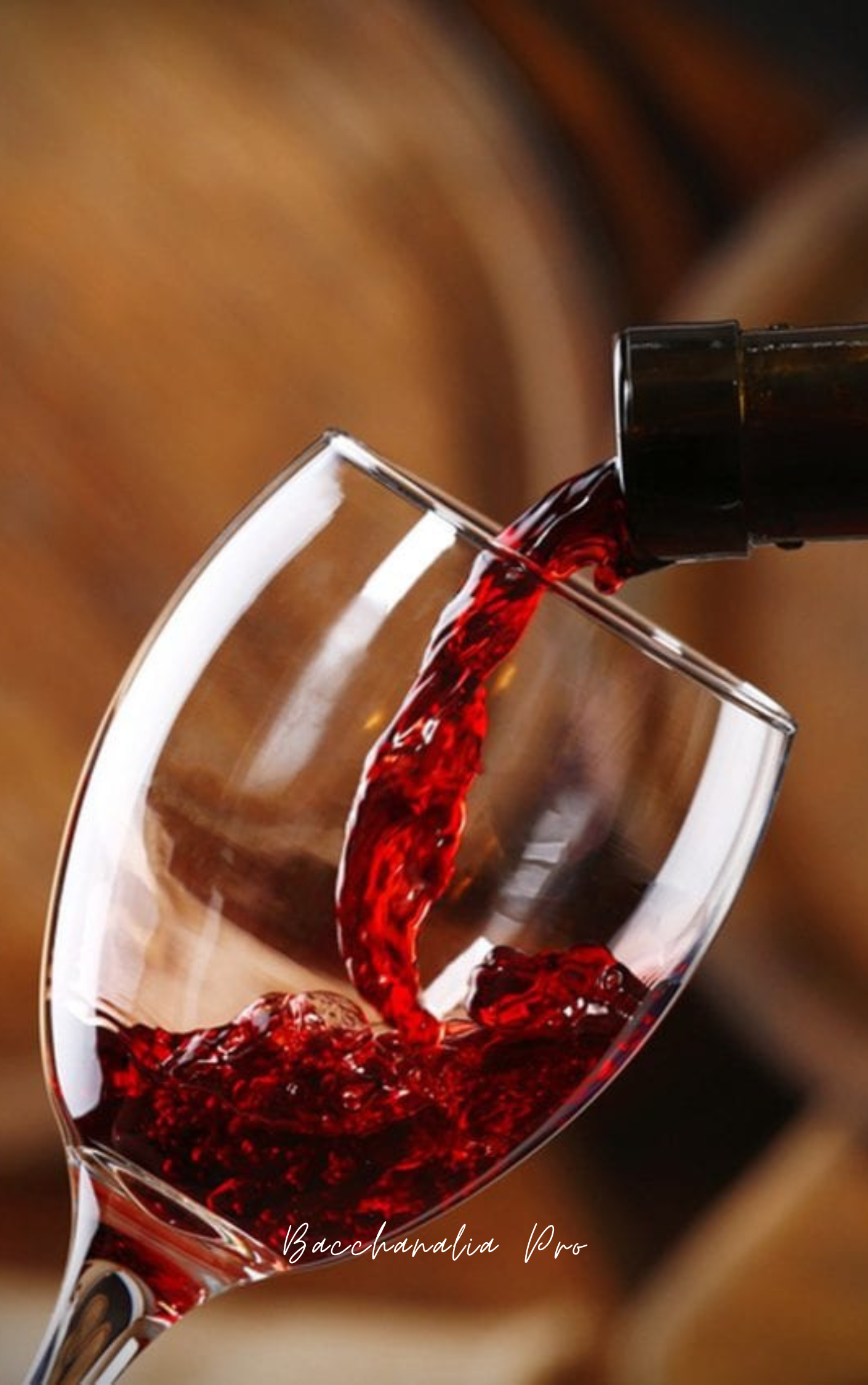Role of the Phoenicians and Greeks
The Phoenicians, renowned as seafarers and traders, were instrumental in spreading winemaking across the Mediterranean. They transported vines and winemaking knowledge to new regions, including modern-day Italy, Spain, and North Africa.
The Greeks further propagated viticulture, integrating wine into their culture, religion, and economy. They improved winemaking techniques and introduced practices such as aging wine.
Origins of Wine Making
Winemaking, a practice as ancient as civilization itself, carries a rich and varied history, deeply intertwined with the development of agriculture, gastronomy, and culture. This essay endeavors to explore the origins and evolution of winemaking, tracing its journey from the earliest known evidence to its position as a global cultural and economic phenomenon.

Vineyard Virtuoso
Prehistoric Evidence and Ancient Techniques
The earliest evidence of wine production dates back to 6000-5800 BC, discovered in the region now known as Georgia. Residue analysis from pottery shards revealed traces of tartaric acid, a key component in grapes and wine.
Further findings in Iran, specifically at the Hajji Firuz Tepe site, dating to around 5400 BC, support the presence of early winemaking activities in the Near East.

Vineyard Virtuoso
Ancient Winemaking Methods
The techniques employed by these early winemakers were rudimentary. They used natural yeast for fermentation and stored wine in clay pots, or amphorae, often buried in the ground for temperature control.
Innovations such as the development of the wine press, which dates back to at least the 2nd millennium BC in the Near East, improved the efficiency of winemaking.

Vineyard Virtuoso
The Spread of Viticulture in Ancient Civilizations
The spread of viticulture in ancient civilizations marks a pivotal chapter in the annals of agriculture and human culture. Originating in the fertile crescents of the Near East, the cultivation of grapes for wine traversed boundaries, influencing and being influenced by the burgeoning civilizations of antiquity. As viticulture meandered through ancient Egypt, Mesopotamia, Greece, and Rome, it became more than an agricultural endeavor—it evolved into a cultural symbol, imbued with religious, medicinal, and social significance.

Vineyard Virtuoso
Role of the Phoenicians and Greeks
The Phoenicians, renowned as seafarers and traders, were instrumental in spreading winemaking across the Mediterranean. They transported vines and winemaking knowledge to new regions, including modern-day Italy, Spain, and North Africa.
The Greeks further propagated viticulture, integrating wine into their culture, religion, and economy. They improved winemaking techniques and introduced practices such as aging wine.

Vineyard Virtuoso
Roman Viticulture and Expansion

Vineyard Virtuoso
Discovery of Wine Varieties and Early Innovations

Vineyard Virtuoso
Development of Grape Varieties

Vineyard Virtuoso
Ancient Innovations

Vineyard Virtuoso
Cultural Integration

Vineyard Virtuoso
Earliest Archaeological Findings
The earliest evidence of wine production dates back to 6000-5800 BC, discovered in the region now known as Georgia. Residue analysis from pottery shards revealed traces of tartaric acid, a key component in grapes and wine.
Further findings in Iran, specifically at the Hajji Firuz Tepe site, dating to around 5400 BC, support the presence of early winemaking activities in the Near East.

Vineyard Virtuoso
Transition from Foraging to Cultivation
The Neolithic revolution, a period marked by the transition from nomadic lifestyles to agriculture, played a crucial role in the development of winemaking.
The domestication of the Eurasian grapevine (Vitis vinifera) was a significant milestone. Initially, wild grapes were foraged, but with the advent of settled life, people began cultivating grapevines, leading to the development of various grape varieties.

Vineyard Virtuoso
Historical Development of Viticulture

Vineyard Virtuoso
The Science of Grape Growing

Vineyard Virtuoso
Viticultural Practices
Vine Training and Pruning
Vine training and pruning are key practices in viticulture. Training systems, such as trellising or the goblet system, are employed to maximize sun exposure and air circulation, essential for healthy grape development. Pruning is necessary to control vine growth, ensure optimal fruit yield, and maintain vine health.

Vineyard Virtuoso
Modern Viticulture

Vineyard Virtuoso
Ancient Beginnings

Vineyard Virtuoso
Middle Ages to Industrial Revolution

Vineyard Virtuoso
Modern Era

Vineyard Virtuoso
Beer in Various Cultures

Vineyard Virtuoso
Beer and Social Dynamics

Vineyard Virtuoso
Ingredients and Processes

Vineyard Virtuoso
Styles and Varieties

Vineyard Virtuoso
Flavor, Aroma, and Appearance

Vineyard Virtuoso
Beer Industry and Market Trends

Vineyard Virtuoso
Business and Marketing

Vineyard Virtuoso
Regulations and Standards

Vineyard Virtuoso
Ethical Issues

Vineyard Virtuoso
Innovations in Brewing

Vineyard Virtuoso
Digitalization and Data Analytics

Vineyard Virtuoso
Beer in a Globalized World

Vineyard Virtuoso
Defining Spirits

Vineyard Virtuoso
Overview of Types of Spirits

Vineyard Virtuoso
Ancient and Medieval Origins

Vineyard Virtuoso
Global Spread and Diversification

Vineyard Virtuoso
Spirits in Religion and Spirituality

Vineyard Virtuoso
Spirits in Arts and Literature

Vineyard Virtuoso
Distillation Process

Vineyard Virtuoso
Ingredients and Recipes

Vineyard Virtuoso
The Global Spirits Industry

Vineyard Virtuoso
Craft and Artisanal Movements

Vineyard Virtuoso
Health Effects and Regulations

Vineyard Virtuoso
Cultural Practices of Consumption

Vineyard Virtuoso
Laws and Regulations

Vineyard Virtuoso
Ethical Aspects of Production and Consumption

Vineyard Virtuoso
Advertising and Branding

Vineyard Virtuoso
Current State and Future Prospects

Vineyard Virtuoso
Societal and Cultural Reflections

Vineyard Virtuoso
Historical Context

Vineyard Virtuoso
Current Global Market Overview

Vineyard Virtuoso
Sources and Varieties

Vineyard Virtuoso
Packaging and Presentation

Vineyard Virtuoso
Quality Standards and Compliance

Vineyard Virtuoso
Health Impacts and Consumer Perceptions

Vineyard Virtuoso
Ecological Footprint of Bottled Water

Vineyard Virtuoso
Waste Management and Recycling

Vineyard Virtuoso
Industry Economics

Vineyard Virtuoso
Pricing and Accessibility

Vineyard Virtuoso
Cultural Significance of Water

Vineyard Virtuoso
Ethical and Legal Considerations

Vineyard Virtuoso
Advances in Purification and Packaging

Vineyard Virtuoso
Smart Water and IoT Integration

Vineyard Virtuoso
Trends and Predictions

Vineyard Virtuoso
Global Water Security and Commercialization

Vineyard Virtuoso
Recommendations and Future Research
